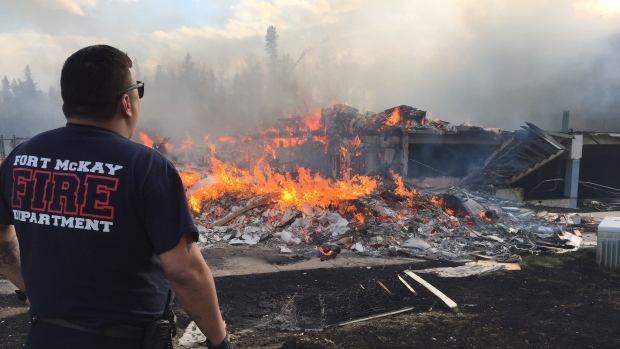Insurance reporting to Fire Commissioner’s office re: Fort McMurray Fires
Source Alberta Insurance Council and the office of the Fire Commissioner
Recognizing the burden the normal reporting system (Form 1242) would place on insurers and adjusters, the Office of the Fire Commissioner (OFC) has developed an abbreviated insurance loss system to capture fire loss data associated with the Fort McMurray fires. The OFC has developed a mapping solution that will allow companies to add the total fire loss and the loss payable by insurers. No other information will be required.
Regional Municipality of Wood Buffalo (RMWB) Fire Insurance Reporting
Background
The Safety Codes Act: Administrative Items Regulation (2004), sections 8, 9, 10 refer to the mandatory requirement for a municipality to report a fire that causes a fatality, injury or dollar loss to the Office of The Fire Commissioner (OFC). Section 11 refers specifically to insurers to report fires for which “that company is interested as insurer”.
Based on previous experience with mass loss reporting after the 2011 Slave Lake wildfire; the OFC has developed a faster and more readily accessible reporting tool. The OFC is aware of the enormous task of reporting all loss fires in the RMWB following the recent wildfire.
The tool chosen to collect data is a mapping product from ESRI Inc. that allows data collection via a series of points on a map (http://www.esri.com/products/collector-for-arcgis). Fire Safety Codes Officers (SCO) from across the province deployed to the RMWB and collected 7,716 data points, along with pictures that represent homes, outbuildings, vehicles and other losses.
Workflow
Since the information gathered by SCO’s begins to create a loss report, insurance companies and adjusters will not be required to submit a 1242 Insurance Report for every loss. Instead, adjusters will be asked to update the information within the map tool by first locating their client’s address and then editing the appropriate point representing that particular loss to include only the loss value and claim paid out. Adjusters can see the attached images for each point to help validate and qualify their loss estimates and payouts.
Please note that this tool is specifically for reporting on property damage directly incurred due to the RMWB wildfire and is not intended to replace previous or subsequent fire reporting in the province at this time.
Access
In order to gain access to the map, companies must provide a list of their intended users. The list must be in a csv (comma separated values) and contain the following: A header (first line) with these field names: Email, First Name, Last Name, Username.
This list can be sent to Kevin.McClement@gov.ab.ca and Micha.Jurisic@gov.ab.ca. Kevin McClement is the lead on managing this information. However, any questions or concerns can be sent to both recipients.
An automatic invite will be sent from ArcGIS Online to the identified email address. Once received, users can follow the link in the message to configure their profile, set a security question and create their password. Instructions on using the application are attached.
Clarification on the reporting requirements for the Fire Commissioner’s office – Fort McMurray Fires
The Fire Commissioner’s Office’s answers to the questions asked by an insurer about the reporting process may help you too, so we are sharing this withyou. Please note that if you have questions, please ask the Fire Commissioner’s office.
Questions asked by insurer:
Could you please clarify if this is loss reporting for any “payout” regarding the FM fires?
It states “Please note that this tool is specifically for reporting on property damage directly incurred due to the RMWB wildfire” so would this include any claim where we simply paid the Mass evacuation or we may have paid for a fridge to be replaced, or just food or, simply cleaning of the home/contents due to smoke?
Answer: insurance companies must report a fire loss to Office of the Fire Commissioner (OFC).
Normally, the way the reporting currently happens is that the fire department would submit a fire report to the OFC and then the owner’s insurance company would submit an insurance report containing the loss values. So, on a homeowner’s property there may be a home, vehicle, and detached garage. Let’s say the home was destroyed and you’ve paid out $250,000 for the building loss and $125,000 for the contents. That would go into the fields in the picture for the home report. In a new report, you would enter that the garage had minor damage resulting from the house fire, say $7,000 for new siding and $0 contents loss. The vehicle has cosmetic damage so you would pay to have the vehicle restored, costing $5,000.
If you have a claim where no direct fire damage was the cause, you would not report this to the OFC. Unsafe fridges, cleaning and other items not directly impacted by fire would not be a reportable loss to the OFC.

What investigators collected in the mapping tool are direct fire losses. We created a simplified form so that adjusters can go in afterward and enter the claim amount, payout and totals. Look up the claimant’s address and you can edit each investigation to complete the loss report.

Any questions or concerns can be sent to Kevin.McClement@gov.ab.ca and Micha.Jurisic@gov.ab.ca.




